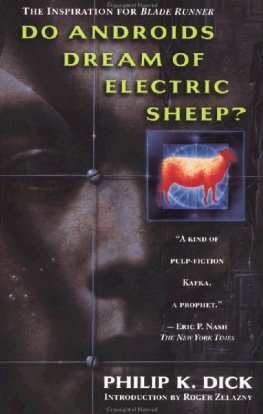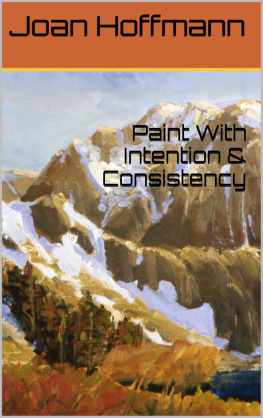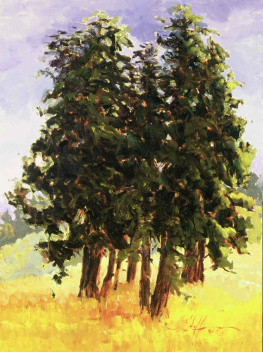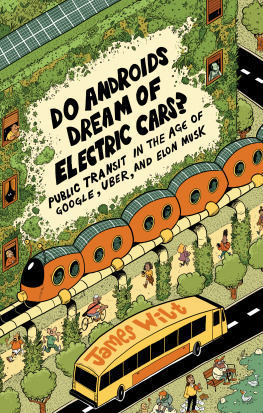Androids in the Enlightenment
Mechanics, Artisans, and Cultures of the Self
ADELHEID VOSKUHL
The University of Chicago Press
Chicago and London
ADELHEID VOSKUHL is associate professor in the Department of the History of Science at Harvard University.
The University of Chicago Press, Chicago 60637
The University of Chicago Press, Ltd., London
2013 by The University of Chicago
All rights reserved. Published 2013
Printed in the United States of America
22 21 20 19 18 17 16 15 14 13 1 2 3 4 5
ISBN-13: 978-0-226-03402-7 (cloth)
ISBN-13: 978-0-226-03416-4 (paper)
ISBN-13: 978-0-226-03433-1 (ebook)
Library of Congress Cataloging-in-Publication Data
Voskuhl, Adelheid.
Androids in the Enlightenment: mechanics, artisans, and cultures of the self / Adelheid Voskuhl.
pages. cm.
Includes bibliographical references and index.
ISBN 978-0-226-03402-7 (cloth : alk. paper)ISBN 978-0-226-03416-4 (pbk. : alk. paper)ISBN 978-0-226-03433-1 (e-book) 1. RobotsHistory. 2. Mechanical engineeringHistory. 3. ArtisansEuropeHistory. 4. EnlightenmentEurope. I. Title.
TJ211.V675 2013
629.8-dc23
2013005611
 The paper used in this publication meets the minimum requirements of the American National Standard for Information SciencesPermanence of Paper for Printed Library Materials, ANSI Z39.48-1992.
The paper used in this publication meets the minimum requirements of the American National Standard for Information SciencesPermanence of Paper for Printed Library Materials, ANSI Z39.48-1992.
To the memory of my mother, again.
Contents
Illustrations
Acknowledgments
This book would not have been possible without the help of numerous people and institutions. Peter Dear, at Cornells Department of Science and Technology Studies, guided it with extraordinary patience and inspiration from its earliest ideas and research, as did Ron Kline and Itsie Hull. The Cornell campus as a whole provided an exceptionally welcoming and stimulating environment. I was privileged to be part of it and am grateful to Steve Hilgartner, Mike Lynch, Trevor Pinch, Michael Dennis, Peter Hohendahl, Michael Steinberg, Dominick LaCapra, Peter Holquist, and Anette Schwartz. My friends in Ithaca were and have continued to be the source of unending joy and support. I thank in particular Emily Dolan, Josh Greenberg, Francesca Wong, Gary Tsifrin, Camille Robcis, Chris Bilodeaux, Tracie Matysik, Hilary Emmett, Kevin Lamb, Ute Tellmann, Ryan Plumley, Marianne Tettlebaum, Dorian Stuber, Suman Seth, Mindy Smith, John Kim, Lara Kelingos, Shobita Parthasarathy, Cyrus Mody, and Javier Lezaun.
Over the years, I received support from Cornell University, the National Science Foundation, the Thyssen Foundation, the Deutsches Museum in Munich, the Muse international dhorlogerie in La Chaux-de-Fond, and the Department of History and Philosophy of Science at Cambridge University. At these places, I received gracious hospitality from Bettine Menke, Hans Medick, Julika Funk, Diet mar Schmidt, Helmuth Trischler, Hartmut Petzold, Silke Berdux, Ludwig Oechslin, Nick Jardine, Simon Schaffer, and Adam Mosley. Olaf Breidbach hosted me for an entire year at the Friedrich-Schiller-Universitt at Jena, and he and Thomas Bach, Gerhard Wiesenfeldt, Jan Frercks, and Heiko Weber made my time there both pleasant and productive. Other museums and archives I visited include the Technisches Museum in Vienna, the Conservatoire national des arts et mtiers in Paris, the Mathematisch-Physikalischer Salon in Dresden, the Muse dart et dhistoire at Neuchtel, the Staatsarchiv in Basel, the Bibliothque de Genve and the Archives dEtat in Geneva, the Metropolitan Museum of Art in New York City, the Archiv der Brder-Unitt in Saxony, the Frstlich-Wiedisches Archiv in Neuwied, the Bibliothque de la Ville La Chaux-de-Fonds, the Muse internationale dart et dhistoire in Neuchtel, and the Forschungsbibliothek Gotha in Schloss Friedenstein. At all these places, I received warm welcome and crucial help in exploring artifact and manuscript collections, notably from Otmar Moritsch, Mirko Herzog, Ghislaine Aung Ko, Rdiger Krger, Peter Plameyer, and Annette Gerlach. I am particularly grateful to the staff of the Conservatoire national des arts et mtiers in Paris and the Muse dart et dhistoire at Neuchtel for help with the images and permissions to reproduce them in this book, and to Daniela Helbig for her help with the logistics. I also thank Elsevier for permission to use material that appeared in a previous article of mine in Studies in History and Philosophy of Science.
I have presented the material in this book at annual meetings of the Society for the History of Technology, the History of Science Society, the Society for Social Studies of Science, and the Society for Philosophy and Technology, and at colloquia and talks at Bates College, the University of Pennsylvania, MIT, Virginia Tech, Georgetown University, Cornell University, the University of Minnesota, and the UCLA Center for Seventeenth- and Eighteenth-Century Studies. There and on other occasions, I received very helpful criticism from Jessica Riskin, Matt Jones, John Tresch, Matt Wisnioski, Roz Williams, Myles Jackson, Ann Johnson, Roe Smith, Rebecca Herzig, Lynda Coon, Lorraine Daston, Debbie Coen, Jan Golinski, Mary Terrall, Pamela Smith, Leonard Rosenband, David Mindell, and Deborah Harkness.
In recent years, the Department of the History of Science at Harvard University has been my intellectual and personal home. I am very grateful to its students, faculty, and affiliates for ideas, criticism, and companionship, in particular Katy Park, Steven Shapin, Peter Galison, Allan Brandt, Mario Biagioli, Anne Harrington, Charles Rosenberg, Janet Brown, Sheila Jasanoff, Jimena Canales, Jeremy Greene, Sophia Roosth, Rebecca Lemov, Elly Truitt, Nasser Zakariya, and Nico Wey-Gomez. Most of this book was written while I spent a very happy year on leave at the Newhouse Center for the Humanities at Wellesley College. Its director Tim Peltason and fellow fellows, in particular Daniel Ussishkin and John Carson, made it a wonderful time. My friends in the Boston area, in Germany, and in other places have helped me through many stages of life and work over the last years, and I owe special thanks to Shu-Yi Oei, Andy Jewett, Sindhu Revuluri, Robin Bernstein, Maya Jasanoff, Ian Miller, Judith Surkis, Shauna Helton, Natalie Wagner, Mary Ann Cicala, Rebecca Dornin, Susanne Jacob, Frauke Sterwerf, Silke Baehr, Falk Mller, and Uljana Feest.
Karen Merikangas Darling and Amy Krynak provided tireless help in putting this book into production. The Presss two anonymous referees made me rethink the manuscript as a whole and provoked me into sharpening its crucial and most difficult points. Sonam Singh gets a special call-out for diligent and brilliant editorial help. All remaining errors are, of course, my own.
ONE
Introduction: Androids, Enlightenment, and the Human-Machine Boundary
Android automata, robots, and mechanical humans have been central to our understanding of the relationship between humans and machines. They are designed to look and move as human beings do and perform motions and techniques such as walking, writing, or music-making. For a spectator, it is often difficult to determine whether an android object is human or machine. Because androids so effectively destabilize our sense of the boundary between humans and machines and, by extension, our sense of our own constitution, they and their histories evoke a broad range of concerns, most significantly, perhaps, those related to the promises and perils of the modern industrial age.
Specifically, those android automata that were made during the Enlightenment have played an influential role in our understanding of modern industrial society and the human-machine boundary in it, either directly or through texts. Enlightenment automata were spectacular and innovative self-moving objects and, in regard to mechanical complexity, the most sophisticated of their kind compared to not only earlier but also later periods. They have attracted peoples attention continuously from the time they were made to the present and have served throughout all stages of industrialization during the nineteenth, twentieth, and twenty-first centuries as eloquent metaphors for the social and economic changes, and novel
Next page












 The paper used in this publication meets the minimum requirements of the American National Standard for Information SciencesPermanence of Paper for Printed Library Materials, ANSI Z39.48-1992.
The paper used in this publication meets the minimum requirements of the American National Standard for Information SciencesPermanence of Paper for Printed Library Materials, ANSI Z39.48-1992.